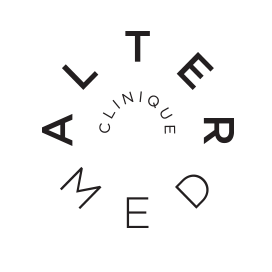
People often come to their therapist with many pertinent questions about how to take care of themselves at home.
As therapists, we are encouraged by this, as it is a sign that the client is taking responsibility for their health.
One of the questions that often comes up is: Should I stretch or strengthen so-and-so's muscle for my problem?
This is an interesting question that can be difficult to answer on your own without using the
Internet as an aid, because there is conflicting information on the net.
Here is an understandable way to answer it
to answer it according to your condition.
. . . . . . . . . . . .
The principle of muscular balance
To understand this section, imagine a clothesline on pulleys like in the backyard.
The two pulleys represent two adjacent joints and the top and bottom ropes represent muscle groups that will pull in two opposite directions (we imagine that the ropes are elastic and can contract like a muscle).
For our example, the hip and knee will be our joints while the quadriceps (front thigh muscles) and hamstrings (back thigh muscles) will represent our cords.
In an ideal world, each of these systems in our body will have similar forces on both sides of the movement to keep the muscle balance relatively equal. We say relatively, because in the thigh, the ideal force ratio between the quadriceps and hamstring is 4:3.
Unfortunately, many people's quadriceps are too strong, or too tight. The elastic cord shrinks on one side (say the top of our clothesline) and the other side, our hamstring, is stretched to hold on. So we have too much force on one side.
In this case, the first step would be to stretch the quadriceps. This way, we decrease the constant force applied to our system.
Then, we could strengthen the hamstrings to balance the musculature on both sides. Performing these two steps allows us to restore balance and prevent potential problems.
It is important to follow the sequence described above because if we start by strengthening the weak side of our equation, we find ourselves adding a second force to counteract the first.
Although a balance is achieved, we must not neglect the stress that this imposes on our two pulleys (joints). This restriction to the joints can cause even more problems, which is best avoided.
. . . . . . . . . . . .
Same muscle, depending on the weather
The factor that makes one wonder about the study today is often pain.
If the muscle itself is painful, according to the vast majority of cases, it is because it has been subjected to too much stress (in intensity or duration), and has had to respond by contracting strongly.
This more often than not creates contractures that must first be released. Relaxation techniques include stretching and massage (or self-massage).
Once the pain is gone, the muscle will have regained most of its normal functionality and will be back to the state it was in before the stress that caused the episode.
To go further in our treatment and prevent other similar episodes, it is important to continue the treatment by moving on to the strengthening phase of this same muscle.
Thus, we first regain balance, then we increase the capacity of our muscle so that activities that were very demanding in the past will be less so in the future.
The muscle must therefore use a smaller percentage of its capacity to perform the same work, which protects it from overuse.
If we draw a parallel with the previous section, strengthening in order to increase the general capacity of our muscular system would be done after having found a muscular balance.
The order of priority would be first to relax our strongest muscle, second to strengthen our weakest muscle, and finally to strengthen both muscle groups while keeping a relative balance between them.
. . . . . . . . . . . .
Small concepts to keep in mind
We must never forget that the muscle is a contractile structure.
Contraction, by definition, consists of a passage from an extended or stretched position to a contracted or shrunken position.
The amplitude or magnitude of this movement will in part determine the strength of the contraction, as the more the muscle is stretched, the more it can contract.
Understanding this, we see stretching in a different light. They not only serve to maintain maximum joint range of motion, but also contribute to muscle contraction strength.
Since the beginning of this article, we have postulated that overly tense muscles could benefit from good stretching exercises, followed by good strengthening to avoid the return of tension.
We have also seen that in order to increase the strength of weaker muscles, both strengthening and stretching can be indicated.
It is therefore clear that stretching and strengthening are not mutually exclusive, but rather synergistic when used wisely.
. . . . . . . . . . . .
Conclusion
The original question of this article, "to stretch or to strengthen according to my condition", should now have evolved a bit with your understanding into something like "what and when to stretch, what and when to strengthen according to my condition".
The body will, in the long run, always benefit from being stronger and more flexible, the issue is now more a matter of priority than one versus the other.
While the situation turns out to be more gray than black or white, the body of this article should allow you to navigate fairly well on your own.
Obviously, not all specific cases are supported in these few thousand words, but when you encounter situations for which you don't feel well enough equipped, your health care professional will always be there to lend a hand.
. . . . . . . . . . . .
Izaak Lavarenne, Physiotherapist NDG
Izaak.lavarenne@cliniquealtermed.com


